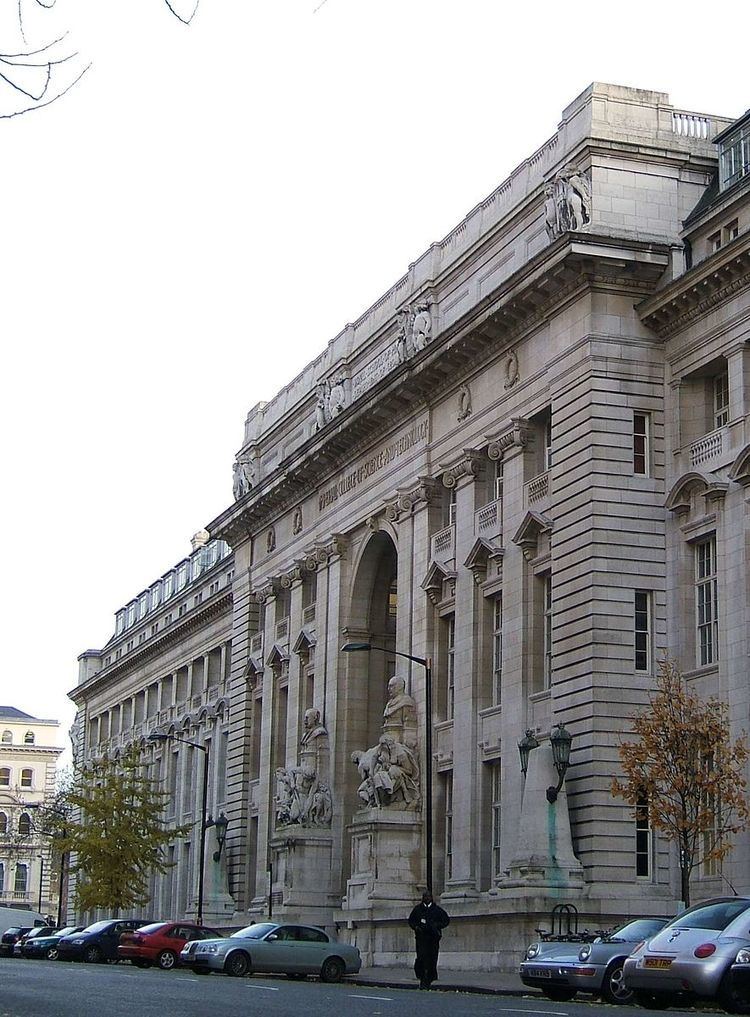 | ||
Silwood Park is the rural campus of Imperial College London, England. It is situated near the village of Sunninghill, near Ascot in Berkshire. Since 1986, there have been major developments on the site with four new college buildings. Adjacent to these buildings is the Technology Transfer Centre: a science park with units leased to commercial companies for research.
Contents
There are a number of the divisions of Faculty of Natural Sciences that have a presence on the campus. Additionally, Silwood Park is home to the NERC Centre for Population Biology (CPB), the International Pesticide Application Research Consortium (IPARC), and the Imperial College Reactor Centre.
History
Prior to World War II, Silwood Park was a private residence—the manor house of Sunninghill—then during the war, it became a convalescent home for airmen. The original manor at which Prince Arthur stayed in 1499 was known as Eastmore and was situated on the hill near Silwood Farm. In about 1788, Sir James Sibbald built a Georgian mansion on part of the present house and demolished the old "Eastmore"; he called it Selwood or Silwood Park. The name stems from the Old English for Sallow (Salix caprea Agg.) which presumably grew then along the banks of the streams that flow through the Park. The house was, in its turn, demolished, and the present mansion was completed in 1878.
In 1947, Silwood Park was purchased by Imperial College for entomological research and field studies. Initially, pioneering developments in insect pest management took place, but more recently the emphasis has been on ecology and evolutionary biology. Staff and research students of the Zoology Department were the first college personnel at Silwood when the Field Station moved from Slough, but the department of Civil Engineering has used it since 1947 for courses in surveying. Botany and Meteorology started work there about thirty years ago and the nuclear reactor was opened in 1965. Over a thousand postgraduate students have been trained at Silwood since its establishment, about half of them taking PhDs. They have come from more than sixty countries, and Silwood-trained graduates have gone to almost every corner of the globe. There are over 200 graduate staff and students working there at any one time. Undergraduates from South Kensington attend for field courses and some final-year projects. In 1981, the departments of Zoology and Botany were merged to form the Department of Biology.
A low power nuclear research reactor (100 kW thermal), named CONSORT II, was licensed at the site on 20 December 1962, completed February 1963, and achieved first criticality in 1965. The reactor will be decommissioned by 2021.
In 1984, the CAB International Institute of Biological Control (IIBC) moved its headquarters to Silwood Park. In 1989, the institute moved into its own new building at Silwood Park, which also houses the Michael Way Library, specialising in ecology, entomology and crop protection. From January 1998, IIBC and its sister Institutes of Entomology, Mycology and Parasitology were integrated on two sites as CABI Bioscience. The Silwood site was the centre for the LUBILOSA Programme, where an inter-disciplinary team could be set up, combining IIBCs biological control skills with (bio)pesticide application (IPARC) and host-pathogen ecology (CPB). CABI continued to focus on biological pest, disease and weed management in Silwood Park until consolidation at Egham (to become the UK Centre) in 2008.
Recent activities
Silwood Park provides a wide range of habitats for the study of animals and plants in the field and for the study of meteorological and geophysical phenomena: its special feature is the proximity of these to modern sophisticated laboratory equipment, such as the Environmental Analysis Section computers, the flight and photoperiod laboratories and in the numerous growth cabinets and controlled environment rooms.
Many of the Silwood Park staff have spent periods working on pest problems overseas. Their continuing contacts as visiting advisers, on lecturing programmes, and in international committees together with close liaison with CABI, the Natural Resources Institute, Biotechnology and Biological Sciences Research Council and Natural Environment Research Council Institutes, and many connections through past and present students and academic visitors, means that work at Silwood Park maintains an international flavour. Support is obtained from Research Councils, other Government Bodies and Industry.
In 2001, the Biology and Biochemistry Departments merged to form the Department of Biological Sciences within the Faculty of Life Sciences. In 2005, further restructuring occurred and the Centre for Environmental Policy, Cell and Molecular Biology, Molecular Biosciences and Biology were moved to the Faculty of Natural Sciences. In 2007 the Divisions of Biology, Cell and Molecular Biology and Molecular Biosciences were moved into the Department of Life Sciences within the Faculty of Natural Sciences. The Division of Biology, which hosts various MSc courses, is based at Silwood Park and at Imperial College's South Kensington campus in southwest London.
